Constructed in 1942, the Yellow Water Naval Air Gunnery School was a short-lived training facility located in Jacksonville, Florida. According to one source, nearly 30,000 men spent six weeks at the school learning all phases of aerial gunnery. The ranges themselves were complicated and expensive to construct. Seven different visible loop firing ranges used self-propelled target cars. Eight miles of railroad tracks were used to build these ranges. They would use as much as three million rounds a day. Yellow Water was one of only three U.S. Navy gunnery schools in the country and the largest. The other two schools were located in Purcell, Oklahoma, and Hollywood, Florida.
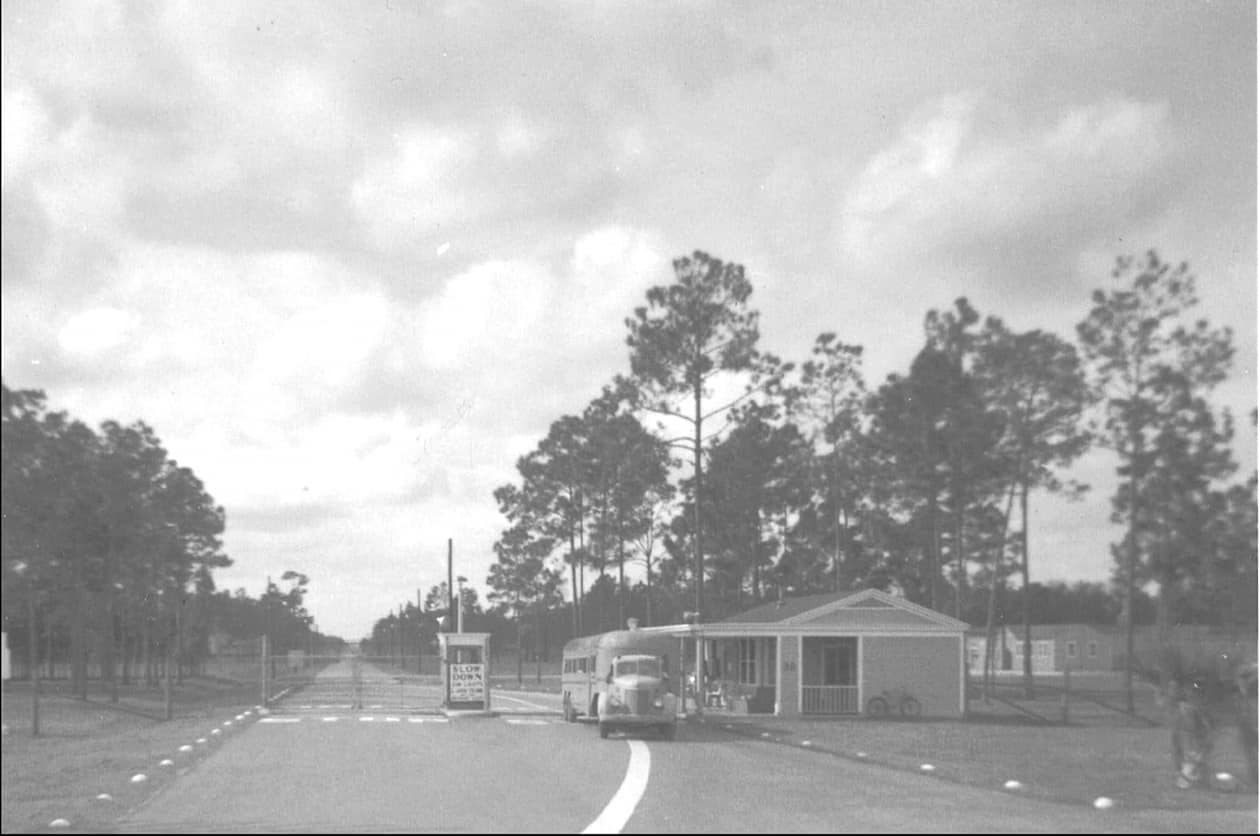
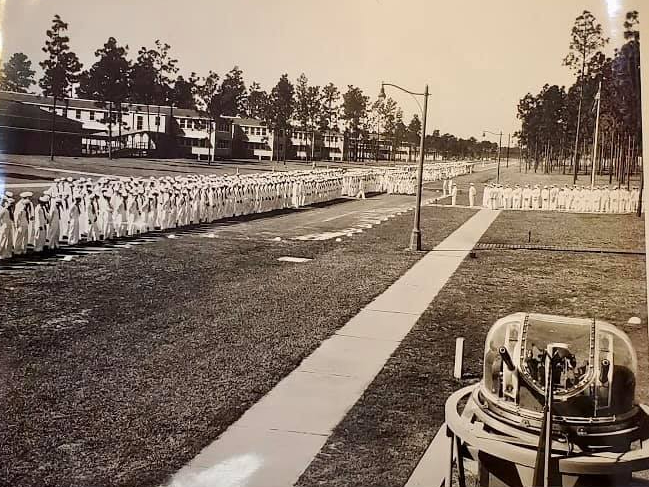


Yellow Water Naval Air Gunnery School closed in 1946-1947. Still, many World War II veterans mention the gunnery school (sometimes called Jacksonville NAGS) in their training memories. Most of the school’s structures were demolished in the 1950s, but some remain to this day. Hidden in the woods, a very large swimming pool served a more significant purpose than just recreation. All sorts of survival training would have been conducted here.


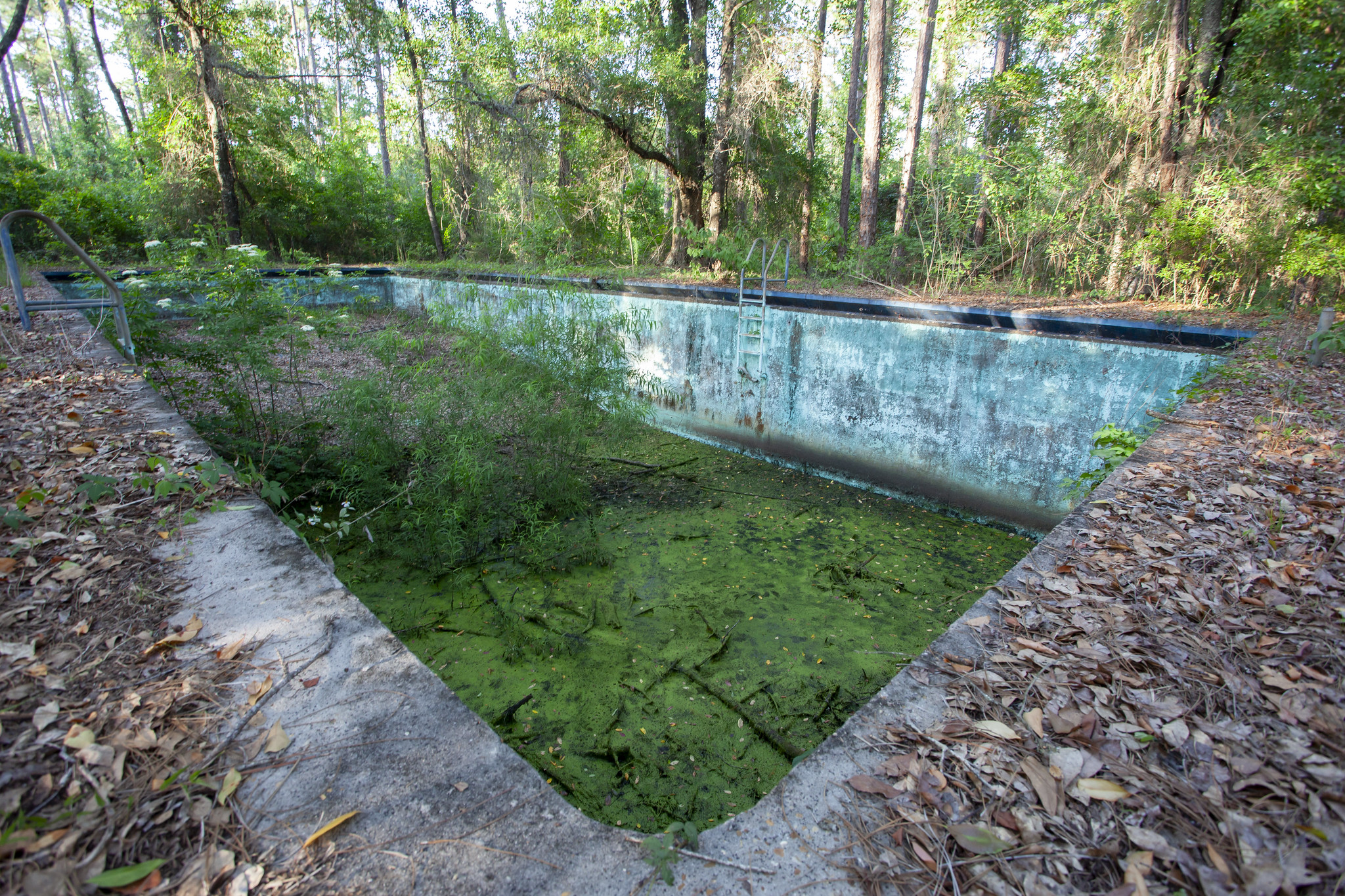
The area remained frozen in time for decades due in part to the high security resulting from part of the area being annexed into a nuclear weapons storage area from 1959 until 1999. As the atomic arms race began between the United States and the Soviet Union in the 1950s, the Yellow Water Weapons Department was established at what was then redesignated Naval Air Station (NAS) Cecil Field, but its purpose was kept a secret from the general public for decades.
Yellow Water Nuclear Weapons Storage consisted of 89 munitions bunkers with concrete walls three feet thick and a steel door that weighs tons. Each bunker held from 10 to 30 nuclear weapons and was surrounded by three rows of barbed wire fences, sensors, searchlights, and surveillance cameras. About 200 Marines kept watch from towers and patrolled on foot. Yellow Water’s bunkers contained security systems that included toxic gases and sounds at a high enough pitch to destroy a person’s eardrums. The Marines that stood guard were armed with M60 machine guns, M16 rifles, grenade launchers, and a barracks full of bored Marines ready to go at it. They were serious about security. Just approaching the entrance would get you detained. In order to get weapons from the magazines to awaiting aircraft, they were routinely trucked across State Road 228. Florida Highway Patrol Troopers stopped traffic a half mile in either direction and Military Police cleared the area.
In 1985, two nuclear weapons researchers, William M. Arkin and Richard W. Fieldhouse, published a book titled Nuclear Battlefields: Global Links in the Arms Race, identifying the base as a storage facility for 140 nuclear depth bombs and other conventional weapons. As expected, the U.S. Navy never confirmed or denied the nuclear weapons storage area in Jacksonville. The people who knew about the weapons turned a blind eye, seeing it as nothing more than business. Others weren’t too happy about nuclear weapons convoys traversing downtown Jacksonville. As a first step toward dismantling nuclear weapons, President George H.W. Bush announced on September 27, 1991, that all nuclear weapons would be removed from Navy ships and Air Force planes. On October 1, 1993, the last of the weapons were loaded onto trucks to be dismantled by the Department of Energy at the Pantex Plant in Amarillo, Texas.
NAS Cecil Field was decommissioned in 1999 and turned over to the City of Jacksonville for redevelopment. A portion of the property was converted into an industrial park known as Cecil Commerce Center. There are several facilities on the north side of the base where Yellow Water once stood, including the Jacksonville Equestrian Center, the Jacksonville Aquatic Center, a community center, a softball complex, and more. A majority of the Yellow Water complex is now a pine forest. The woods are full of wildlife. It is not uncommon to see whitetail deer, wild hogs, or a variety of snakes while venturing through the pine forest. There has even been a reported Bigfoot sighting at Yellow Water. In June 2009, a report was filed by BFRO investigator David Wright that stated the following:
“We were allowing a contractor to drive through our property to gain access to the forestry land and I went to talk to them to get an update on the project. It turned out they were not working that day, so I was riding around just looking for wildlife. I came up to one of the old roads and when I looked north on the road there was something in the road sitting on its hunches it appeared to have one arm in the air and the other was scratching its side. I was traveling kind of fast and could not stop until I was about 10 feet past the road. I put the cart in reverse to back up and it was not in the road any longer. I looked just past the spot where it was in the road, and it was on the side of the road and was bending down a limb from a 4- or 5-foot pine tree peering out at me. This lasted for maybe 3 or 4 seconds, and it ran in from what I could tell was an upright position. The small pines hindered my view when it was running but I am fairly positive it was running upright. Whatever it was, was about 2 maybe 3-foot-tall judging by the trees and was very black and resembled a primate. I worked at the Jax Zoo in maintenance for a few years and one of the exhibits I was responsible for was the Great Apes, so I am very familiar with several different primates, and it reminded me very much of a bonobo, a kind of chimpanzee. I was fairly shaken up and I did not go look for tracks, signs, or anything. Now to present, a few weeks ago forestry had a timber company thinning the pines in the same area, I went back there to talk to the job foreman as they were using our property to gain access. They were two or three hundred yards back in the woods and I did not want to drive my cart back there because of the road. I got maybe thirty yards off the road down the skidder trail, and I am not sure what it was but the hair on my neck stood straight. I had a strong sense something was out there watching me. It may have been my imagination, but I really believe I was being watched.“
Miles of barbed wire fencing, a few concrete buildings, and the earth-covered storage bunkers are all that is left of this once top-secret area. Today, the property remains off-limits to the general public and is still owned by the City of Jacksonville who occasionally uses it for police training. Some of the bunker doors are missing after a scrapper cut several doors off and hauled them to a scrapyard. When he told the owner he would be back with more, the scrapyard owner notified the police.
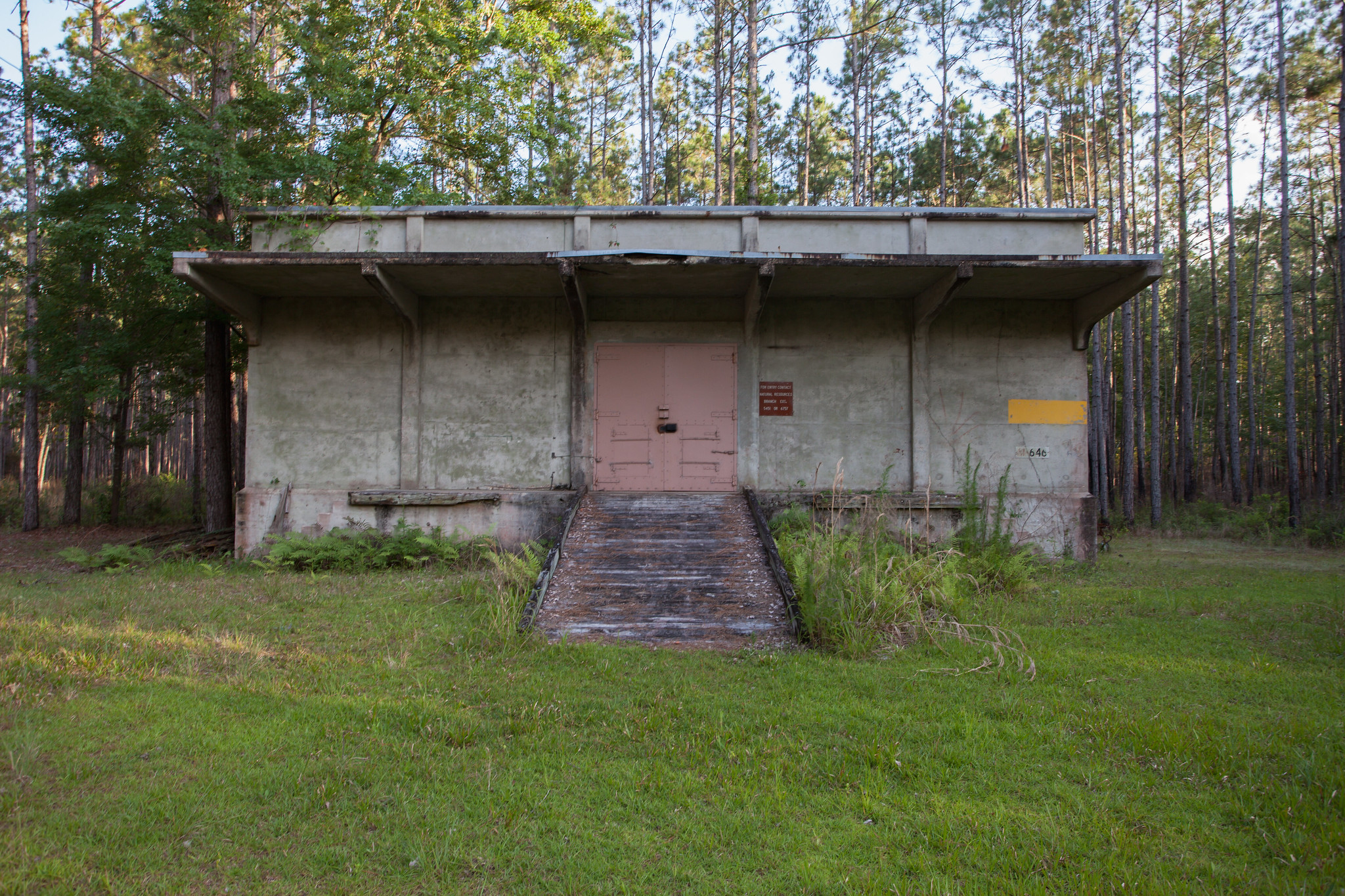

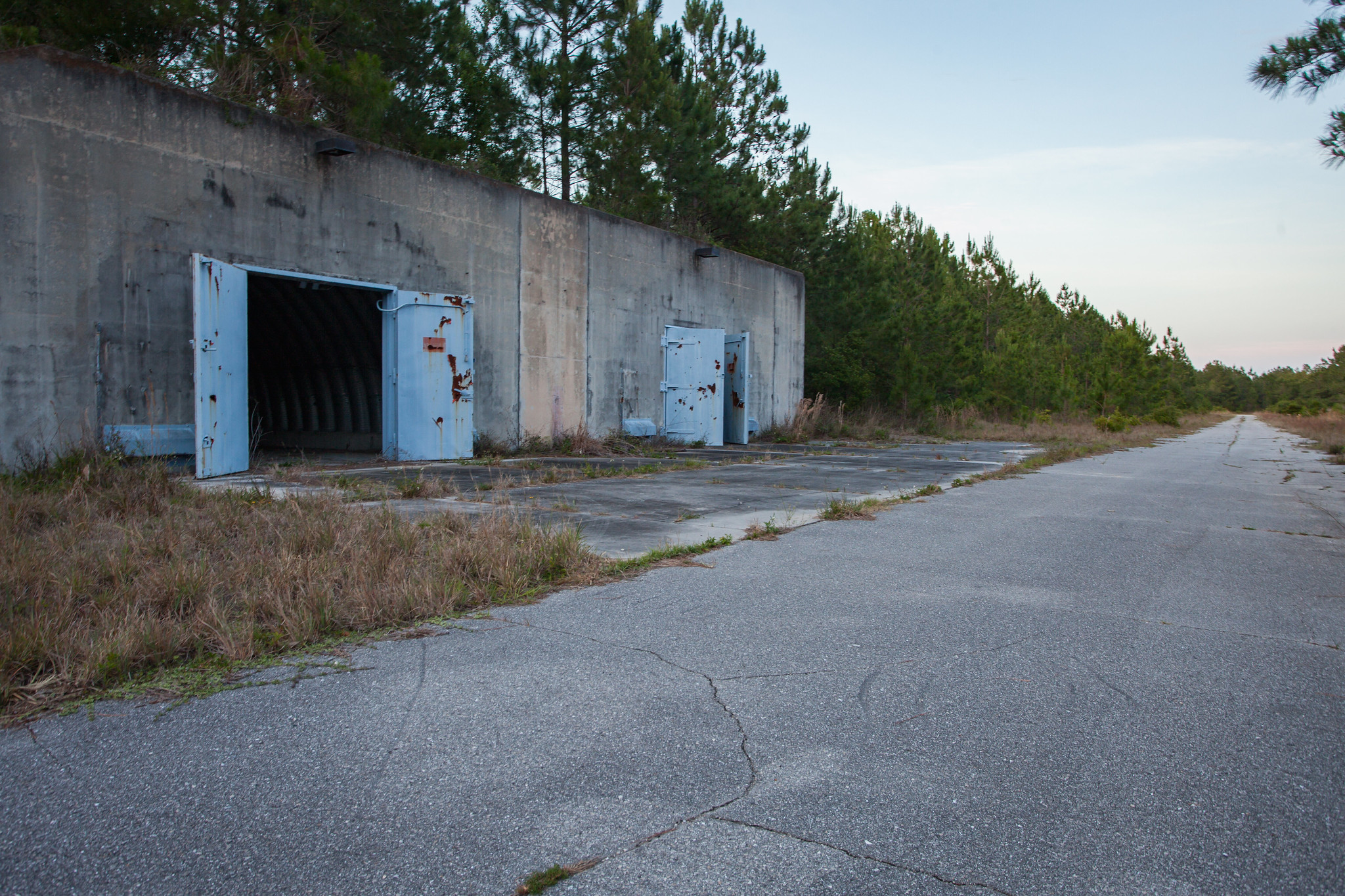
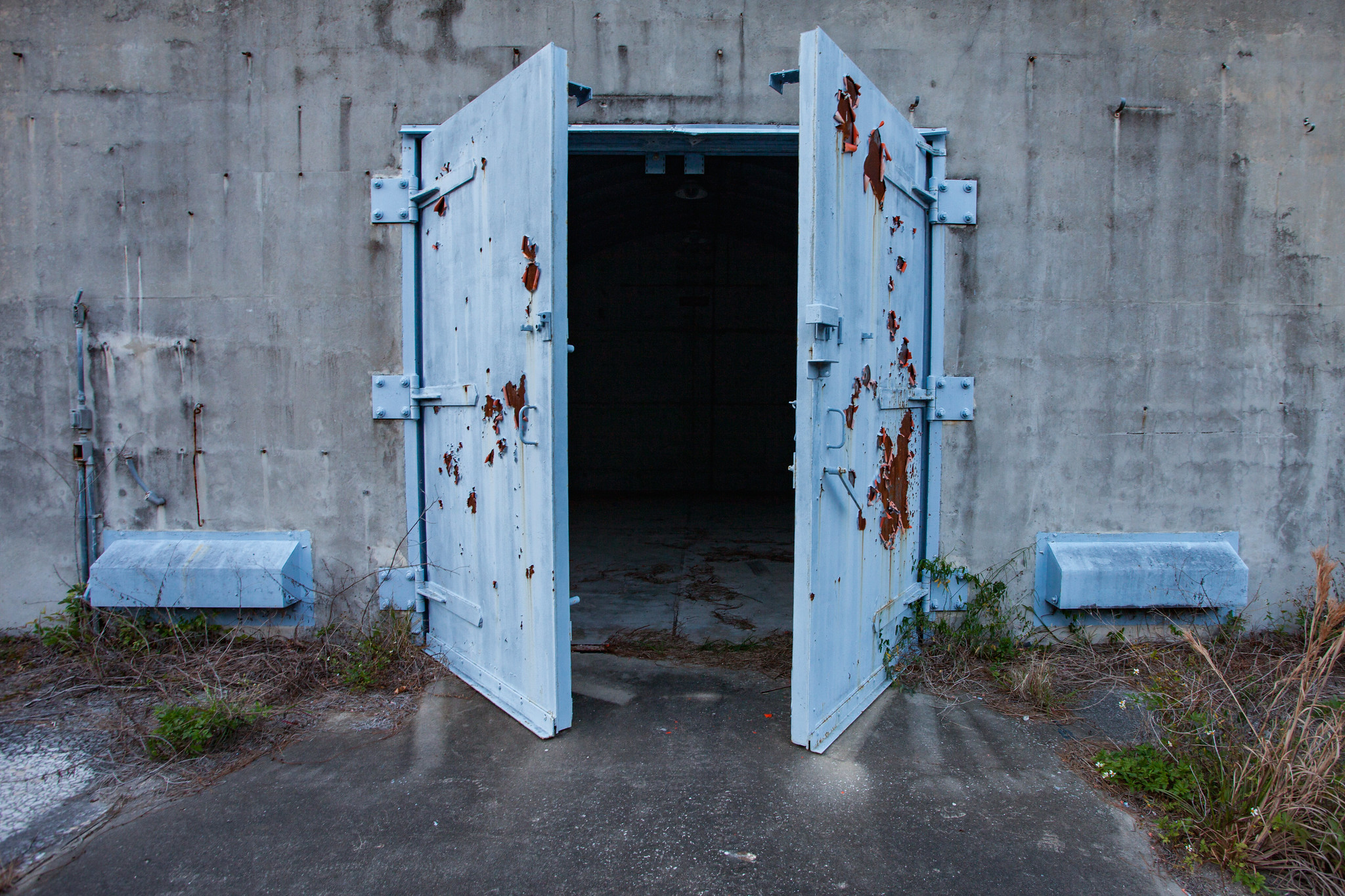
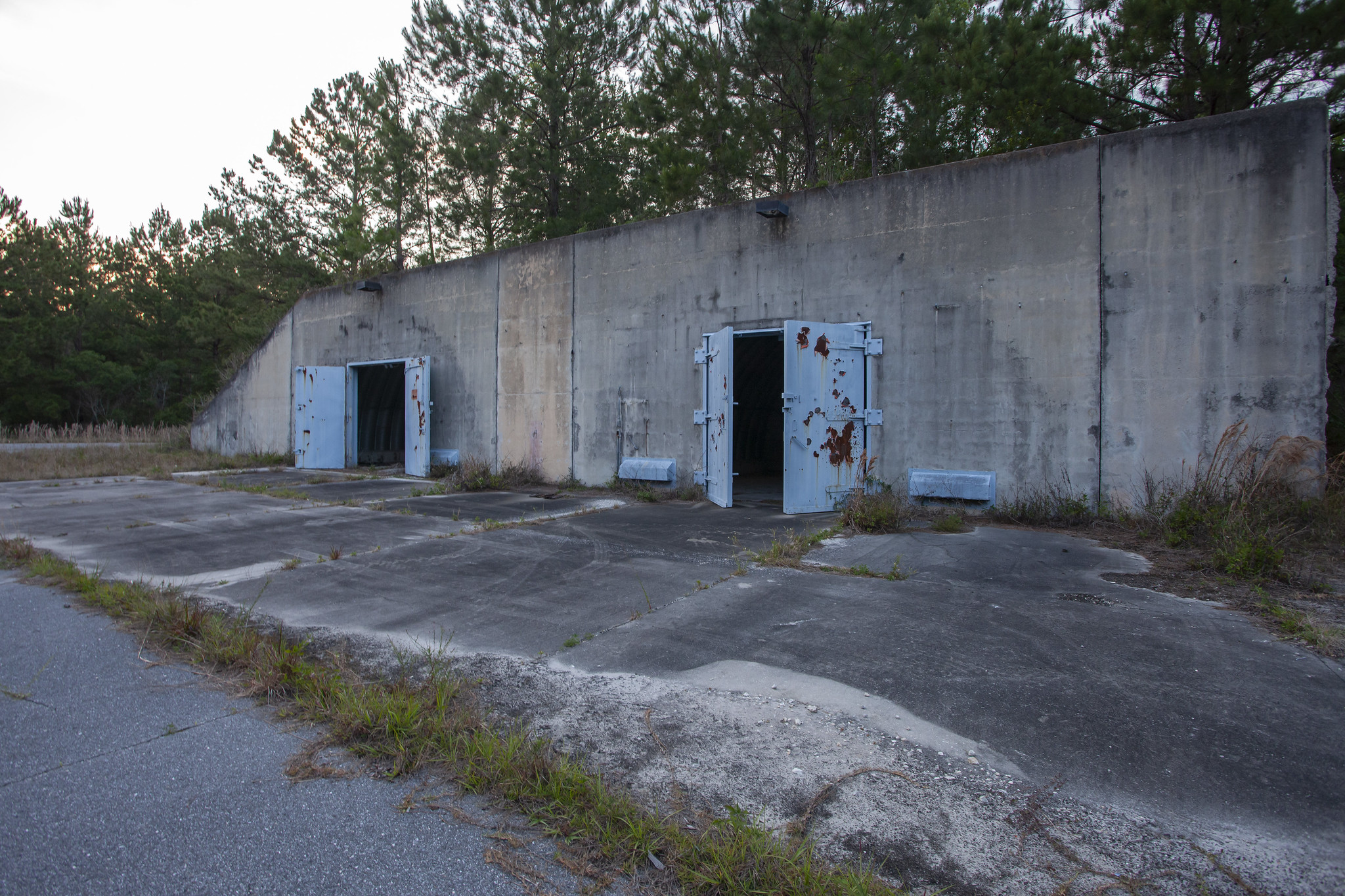

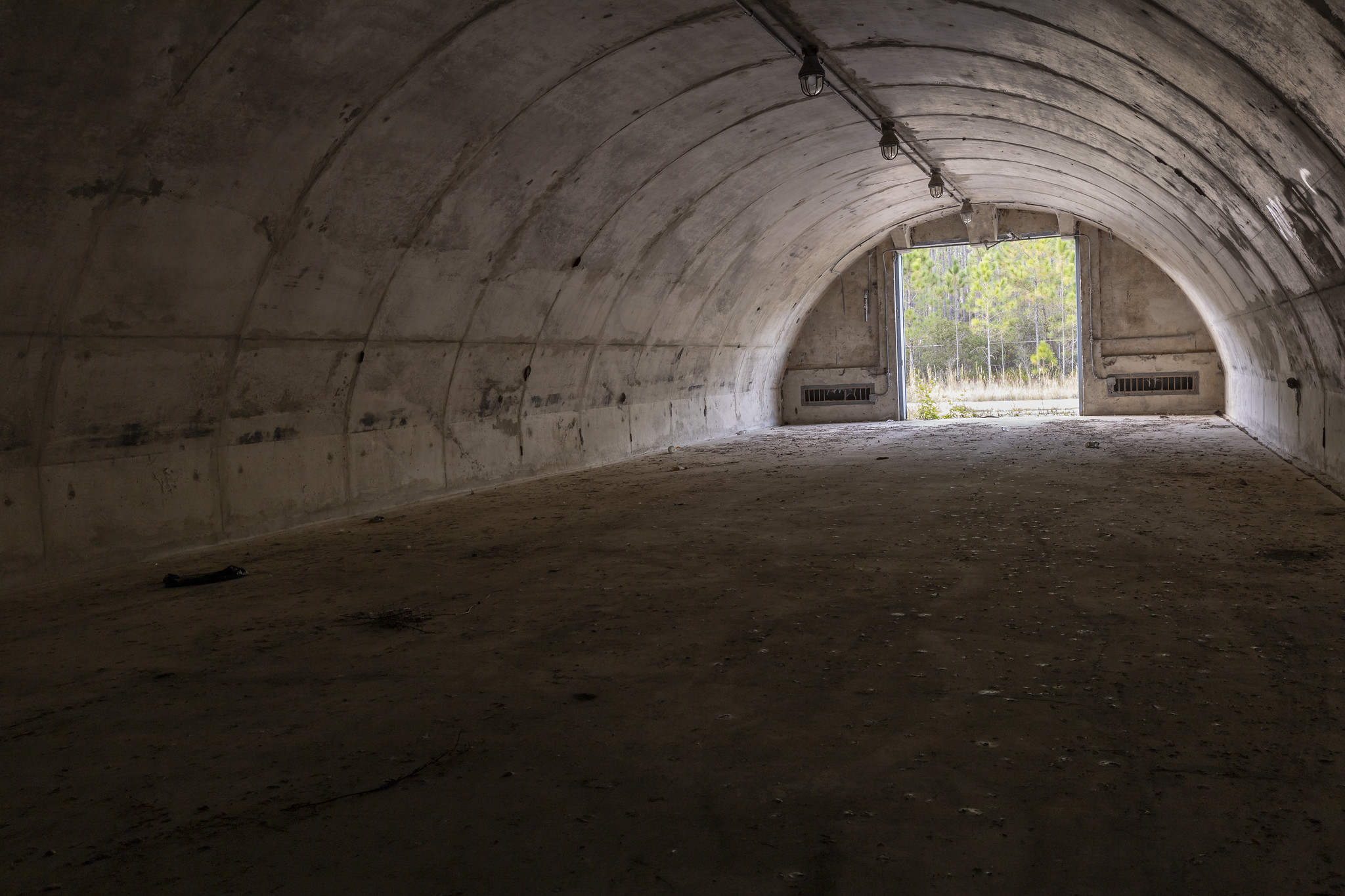
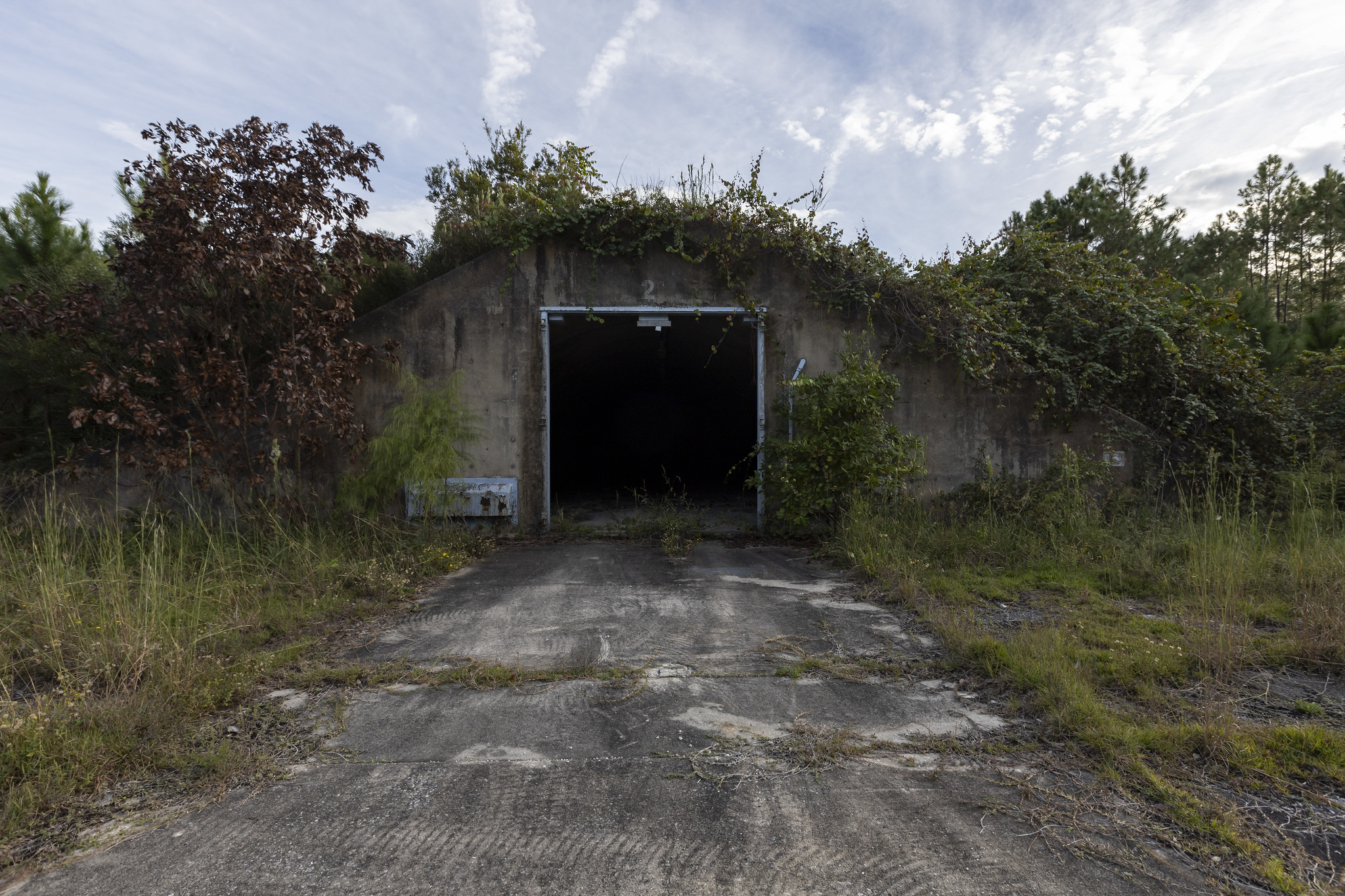
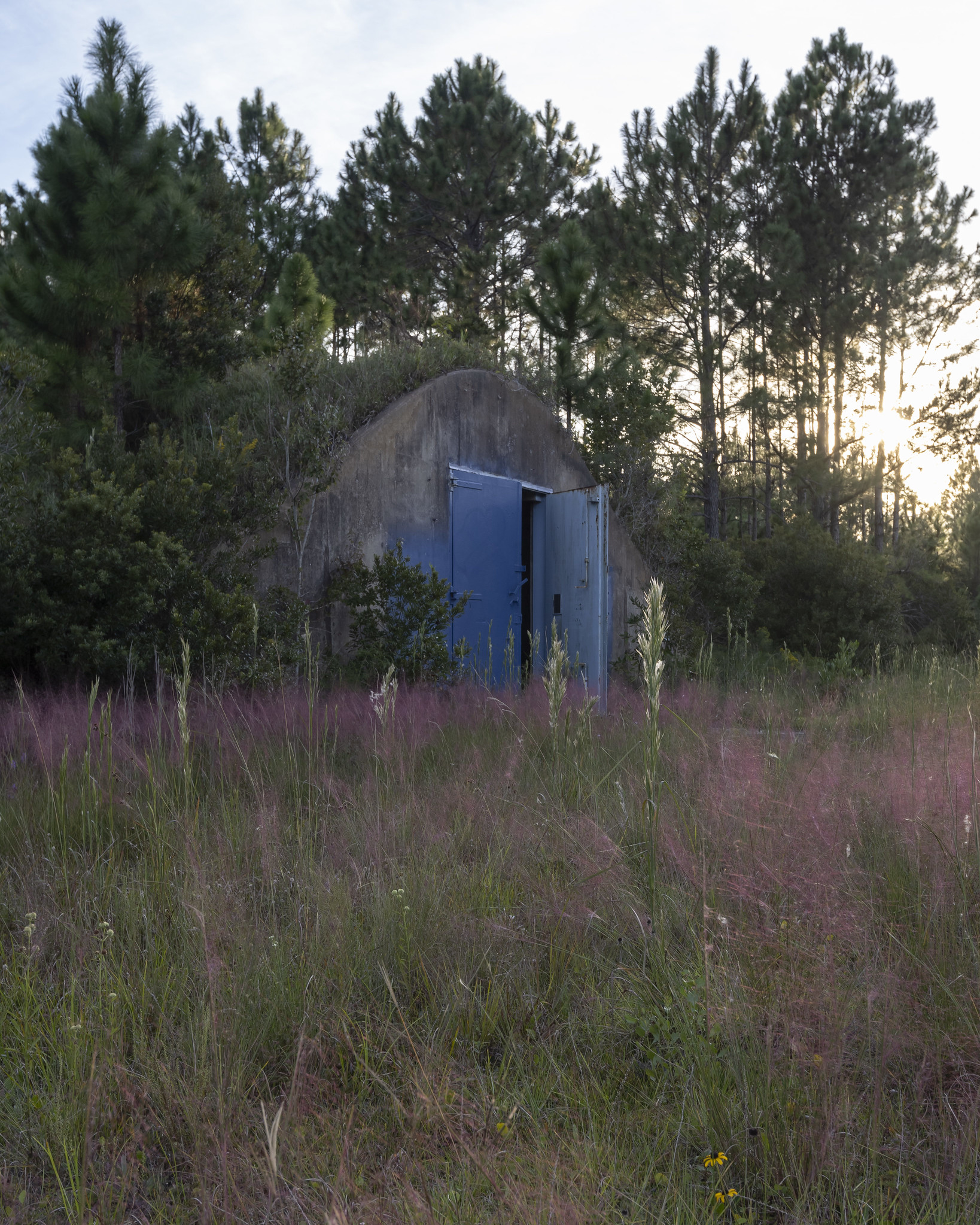
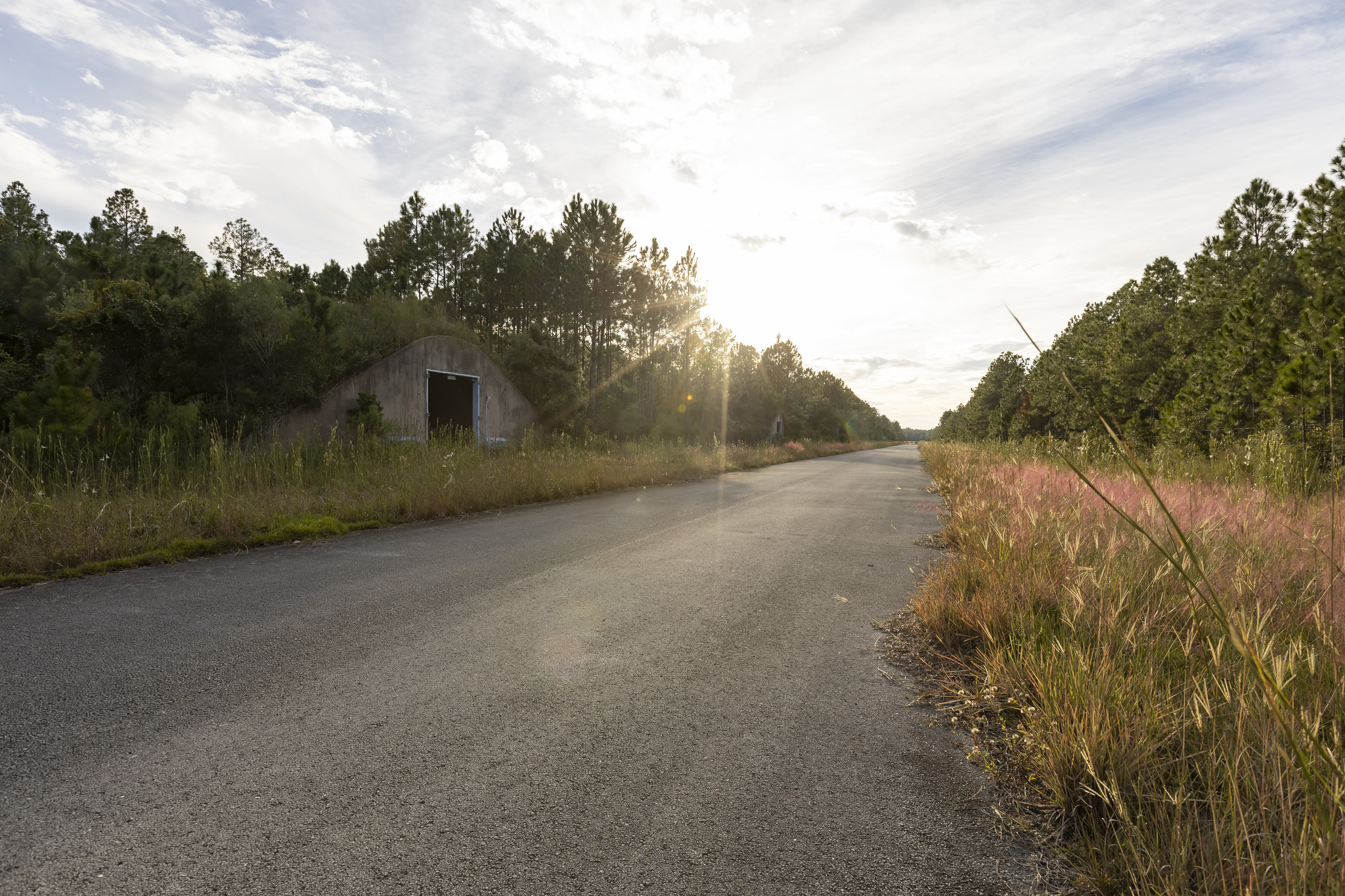
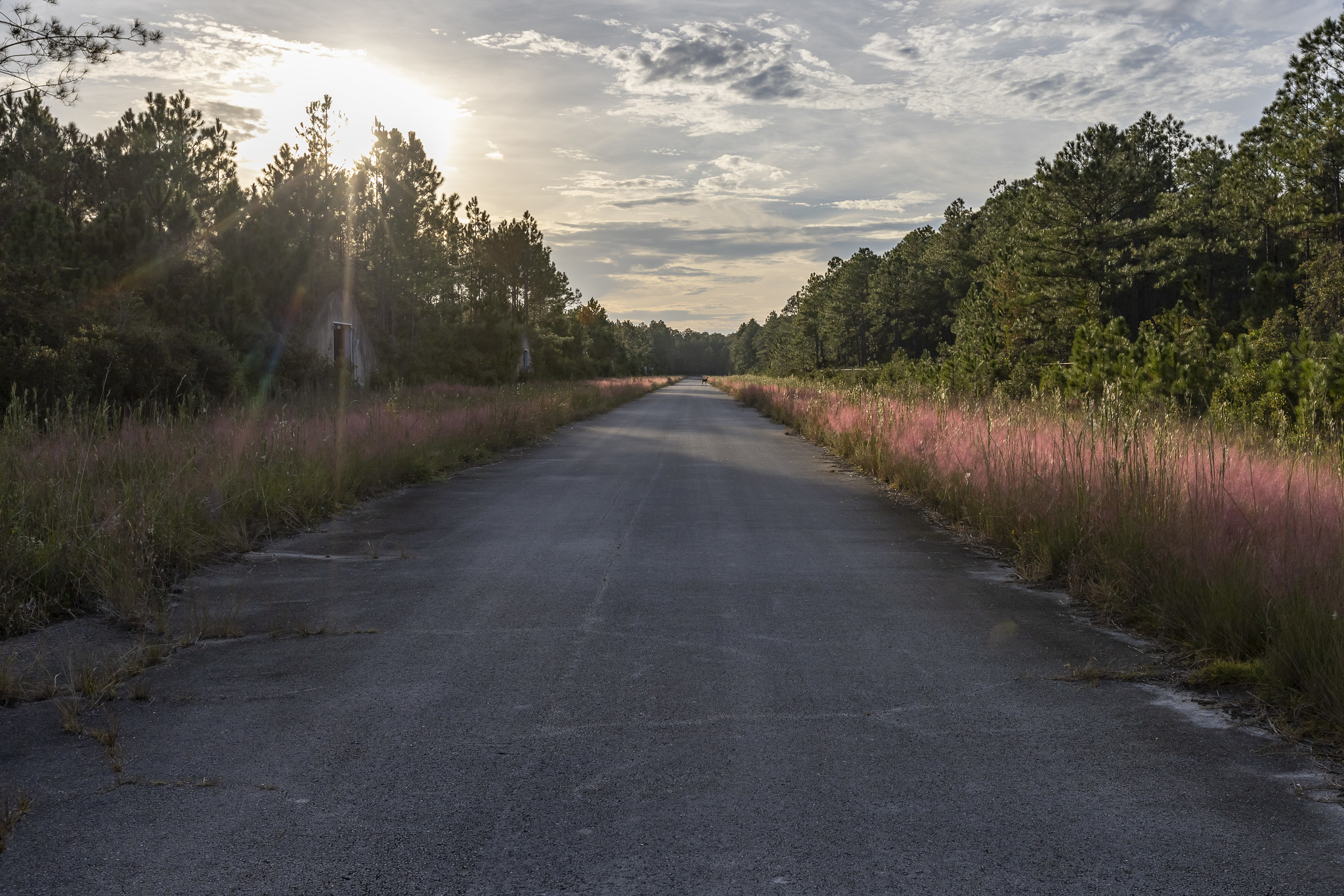
Thank you for reading. Please share the blog with your friends. I appreciate the support.
You can find me on Facebook, Instagram, and TikTok. For more amazing, abandoned places from across Jacksonville, Florida, and the surrounding areas, check out Abandoned North Florida and other book titles.
Discover more from Abandoned Southeast
Subscribe to get the latest posts sent to your email.

thats awesome!! thanks
LikeLike
Fascinating… well done.
LikeLike
Wow! To think that I lived a mere 50 miles from such potential death and destruction is scary. Bigfoot doesn’t bother me. A fighter jet used to be displayed at the entrance of Cecil Field. It’s a shame they removed it when the base closed.
LikeLiked by 1 person
Beautiful photos, and very cool history. These remind me of the old bunkers out in the back 40 of Fort Campbell, KY.
LikeLiked by 1 person
Thank you!
LikeLike
I could tell you stories of Cecil Field. It was my childhood home, and Yellow Water was my playground. I was a military brat and my dad was a flight instructor. My best friends dad was the commander of the Marine detachment that guarded the munitions. We were friends with many of the marines but never knew why they were there. That marine Colonel taught me how to shoot rifles when I was 10 years old. Fond memories of a time I never new that we were sheltered from the mysteries of the forest we loved so much. We knew those woods like we owned it.
LikeLike